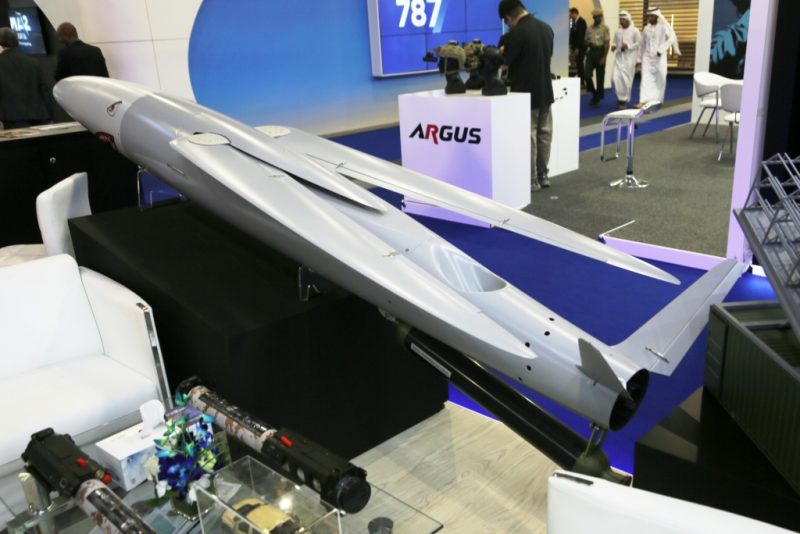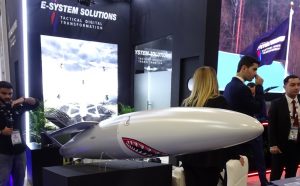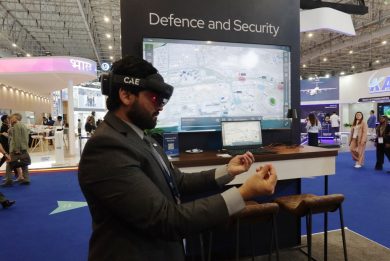Dubai Airshow 2025 – E-System Solutions presents LCCM Mk2 low-cost cruise missile
The Emirati-Belarusian company E-System Solutions presented its strike system based on the LCCM Mk2 low-cost cruise missile. The development of this strike system was based on lessons learned in the Ukrainian theater of operations, where strikes against troops and critical infrastructure are carried out daily using low-cost attack drones and cruise missiles
From an economic perspective, the massive scale of strikes using aircraft and missiles requires a reduction in the cost of ammunition. Since the military is interested in using cheaper, high-precision weapons, defence companies must consider cost reduction requirements when developing new weapons. The strike system based on the LCCM Mk2, presented in Dubai, is designed to engage a wide variety of targets at ranges of up to 1,000 km. As explained to EDR On-Line at the company’s booth, targets engaged by the LCCM Mk2 cruise missile include lightly armoured and armoured vehicles, command vehicles and radar reconnaissance vehicles, air defence fire units, light fortifications and field command posts, landed aircraft and other air assets on the ground, vulnerable targets such as cruise missiles on launch pads, UAVs, and helicopters.
The LCCM Mk2 missile has a conventional aerodynamic configuration with a top-mounted trapezoidal wing that deploys after launch. At launch a booster brings the missile to speed, a small turbojet engine with a top-mounted air intake located in the aft section of the missile body ensuring thrust during the cruise flight.
The LCCM Mk2 has a length of 3.15 metres, a wingspan of 2.5 metres, a maximum takeoff mass of 122 kg, a dry mass of 38 kg, a maximum fuel capacity of 48 litres (34 kg), a payload mass of 25-50 kg (depending on flight range), a range of 500-1000 km, a flight speed of 220-600 km/h, and a maximum flight altitude of 11,500 m. During flight, the missile can sustain acceleration loads ranging from +4g to -3g. The developers did not specify the type of missile guidance system, which uses a radio altimeter to monitor flight altitude. However, based on the list of targets it can engage, it can be assumed that the missile is equipped with an inertial navigation system (INS), corrected by GPS signals, which operates during the midcourse phase of its guidance. An optoelectronic guidance system with a thermal imaging channel may be used during the terminal phase of its trajectory.
The warhead may be of the high-explosive fragmentation (HE-FRAG) type with a radial fragmentation pattern, effective against airborne vehicles and aircraft within a 10-meter radius, against personnel within a 50-meter radius, and can also destroy bunkers and pillboxes with a direct hit.
In addition, warheads with a cone-shaped fragmentation pattern, thermobaric warheads, and bunker-busting warheads may be used. LCCM missiles can be launched from three types of platforms: land-based catapult launchers, launchers on LAV/LCVs, and containerized launchers mounted on trailers or ships. The container launcher can accommodate nine cruise missiles in a 3 x 3 configuration.
E-System Solution explained that the LCCM Mk2 strike system development has been completed, and combat testing is planned in the near future.
Photos by N. Novichkov






